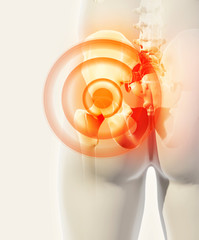
Arthritis is a painful condition that affects millions of Americans annually. It can cause severe joint pain, swelling, stiffness, and loss of mobility. Physical therapy is an effective treatment option for many people with arthritis and can help reduce pain, improve range of motion, and improve overall quality of life. This article will discuss how physical therapy can help relieve arthritis pain.
What Is Arthritis?
Arthritis is a term used to describe a group of conditions that cause joint pain and inflammation. The most common types of arthritis are osteoarthritis, rheumatoid arthritis, and gout. Osteoarthritis is the most common type of arthritis and typically affects people over the age of 50. It is caused by wear and tear on the joints and can lead to joint pain, stiffness, and swelling. Rheumatoid arthritis is an autoimmune condition that causes inflammation of the joints and can lead to joint deformity and disability. Gout is a type of arthritis caused by a buildup of uric acid in the body, which can cause joint pain and inflammation.
How Can Physical Therapy Help?
Physical therapy can be an effective treatment for arthritis and can reduce symptoms such as pain, stiffness, and swelling. Physical therapists can work with individuals to create a personalized treatment plan that includes exercises to improve range of motion and strength, manual therapy to reduce pain and stiffness, and lifestyle modifications to reduce stress on the joints.
Physical therapists can also provide advice on how to modify activities to reduce stress on the joints and prevent further injury. Additionally, they can provide education on how to safely manage arthritis and provide information about assistive devices that can help improve mobility.
Benefits of Physical Therapy for Arthritis
Physical therapy can help people with arthritis in a number of ways. It can reduce pain by improving range of motion, strengthening muscles, and increasing joint flexibility. It can also help improve balance and coordination, which can reduce the risk of falls and injuries. Additionally, physical therapy can help reduce the risk of developing other chronic conditions such as obesity and heart disease.
Physical therapy can also help improve quality of life by increasing physical activity levels, which can lead to improved mood and energy. It can also help individuals cope with the emotional and social impacts of arthritis, such as depression and isolation.
Conclusion
Physical therapy can be an effective treatment option for people with arthritis. It can help reduce arthritis pain, improve range of motion, and improve overall quality of life. Physical therapists can work with individuals to create a personalized treatment plan and provide education and support to help manage arthritis and reduce its impact on daily life.
ReplyForward |
